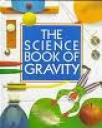The Science Book of Gravity, written by Neil Ardley, explores the gravity with 12 hands on experiments that are great for in class work. The book begins by explaing gravity and its significance to many things ranging from simple falling to how it holds the galaxies together. After that the book gives 11 different experiments that can be carried out easily in the classroom. For each experiment there are easy to follow pictures and instructions. These experiements range from exploring how size is independent of speed on an inclined plane to exploring the center of balence on an irregular shape to how air pressure can prevent water leaks in a bottle. Each experiment is accompanied by a short explanation as to why the experiment works.
Curriculum Connections
This book is designed to work with students on gravity, but also touches on some more advanced topics in science. It would be useful for hands on experiments for 4-6 grade. It works on VA SOL’s 4.2, 6.2, 6.8.
Additional Resources
- Schoolhouse Rocks provides a nice introduction to gravity with a song and video. These videos can be used to engage the students and provide practical ways gravity affects us in a fun way.
- Science Netlinks provides some easy ways to introduce gravity using things you can find around the school yard. It also has some ways to use gravity throughout a unit plan to keep the students engaged.
- Your Weight on Other Worlds explores how gravity on different planets can affect how much you weigh. It is a nice way to show that your weight is not a constant but a product of gravity.
Book: The Science Book of Gravity
Author/Illustrator: Neil Ardley
Publisher: Harcourt Children’s Books
Publication Date: September 1992
Pages: 28 pages
Grade Range: 4-6
ISBN-13: 978-0152006211

